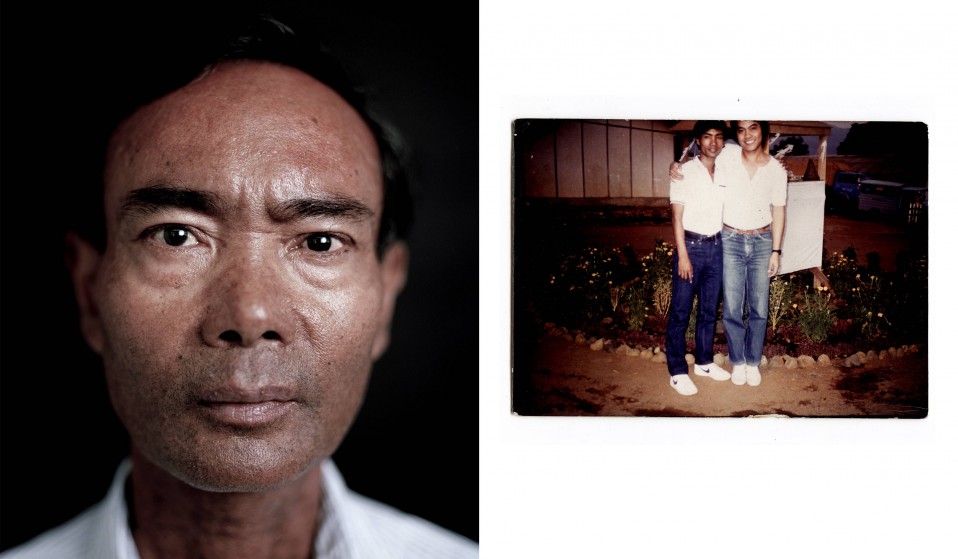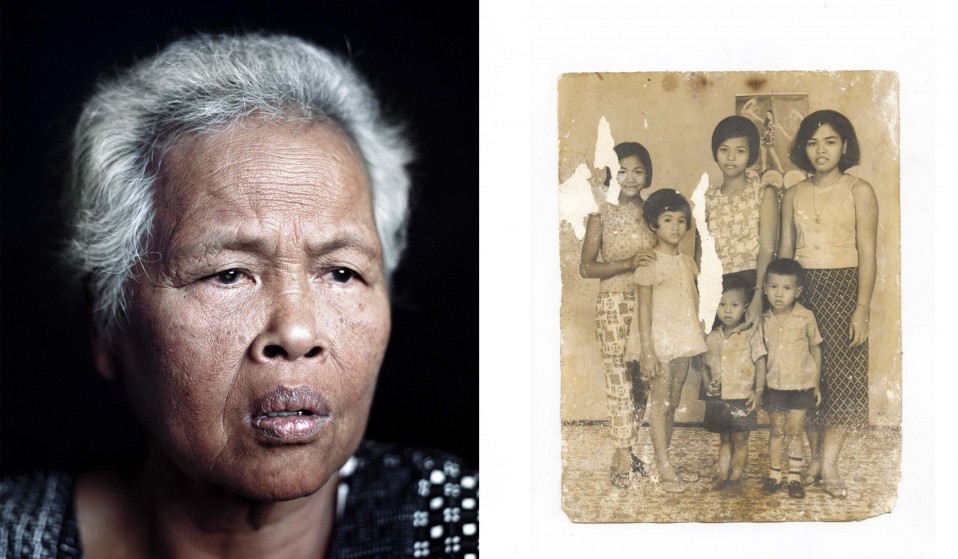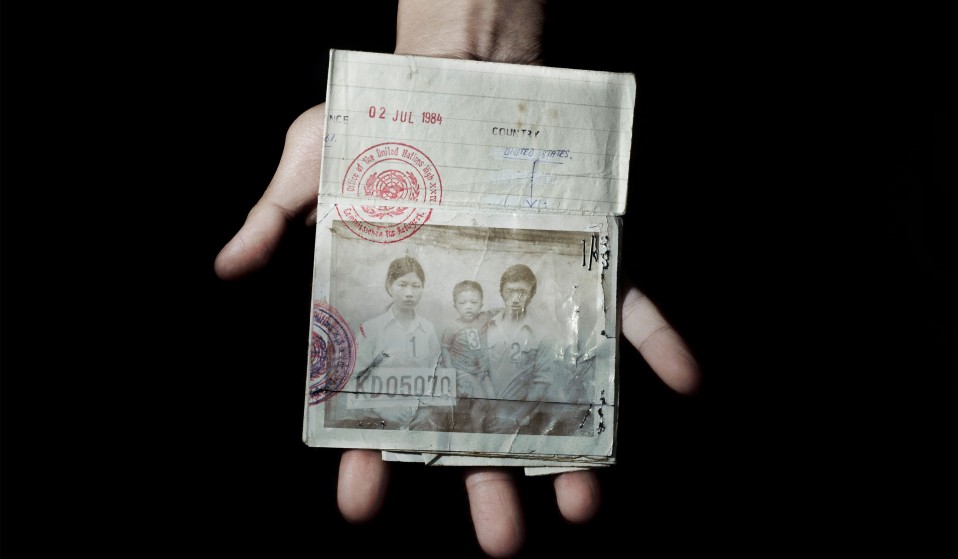Pete Pin



Pete Pin was born in the Khao-I-Dang refugee camp on the border of Cambodia and Thailand in 1982. His family were resettled as refugees in Stockton, California in the 1980’s. Pin’s work explores themes of memory, migration, and inter-generational trauma among the Cambodian American community across the United States and among his own family in the U.S. and Cambodia. His work links heavily to my personal study as I’m also looking at my own family and the way we’ve migrated from country to country, which is why I was attracted to his work and chose him as one of my artists.
Analysis:

This is one of the images Pete Pin took and used to tell the untold stories of the Cambodian genocide. Pin used a juxta position between a formal portrait and a group/family portrait. On the left we can see a portrait (neck up) of an elderly woman standing in front of a black background. The black could represent her dark and traumatic past. She’s looking to the right instead of looking straight at the camera, giving the impression that she’s looking at the group portrait and mourning the old times. Maybe she was one of the only survivors, which is why is also has this sad expression on her face. On the right there’s is a group photograph containing of six children (four girls, of which two seem to be teenagers, and two young boys, possibly toddlers.) We can tell this image is very old as it has a yellow tint to it and white marks showing its almost falling apart. These children could all be family or just friends. It is also hard to say which one the elderly woman is, assuming she was in the image, but you can tell that they all cared for and loved one another because they are standing very close together and some even have their arms around each other and smiling.
